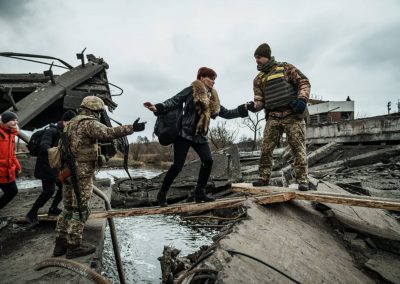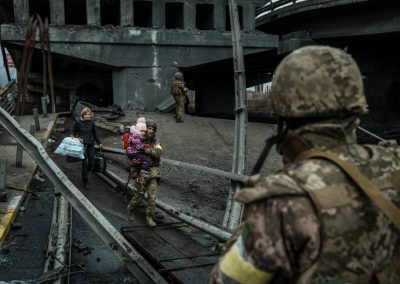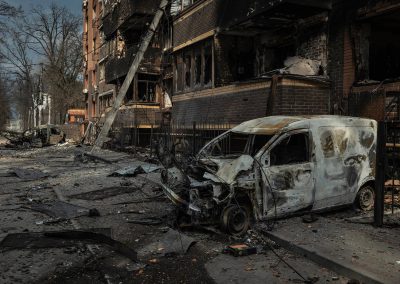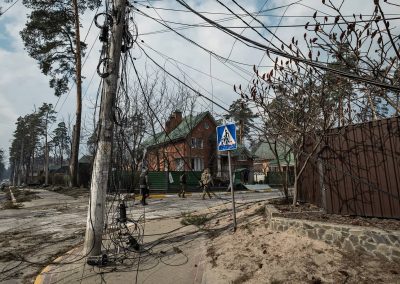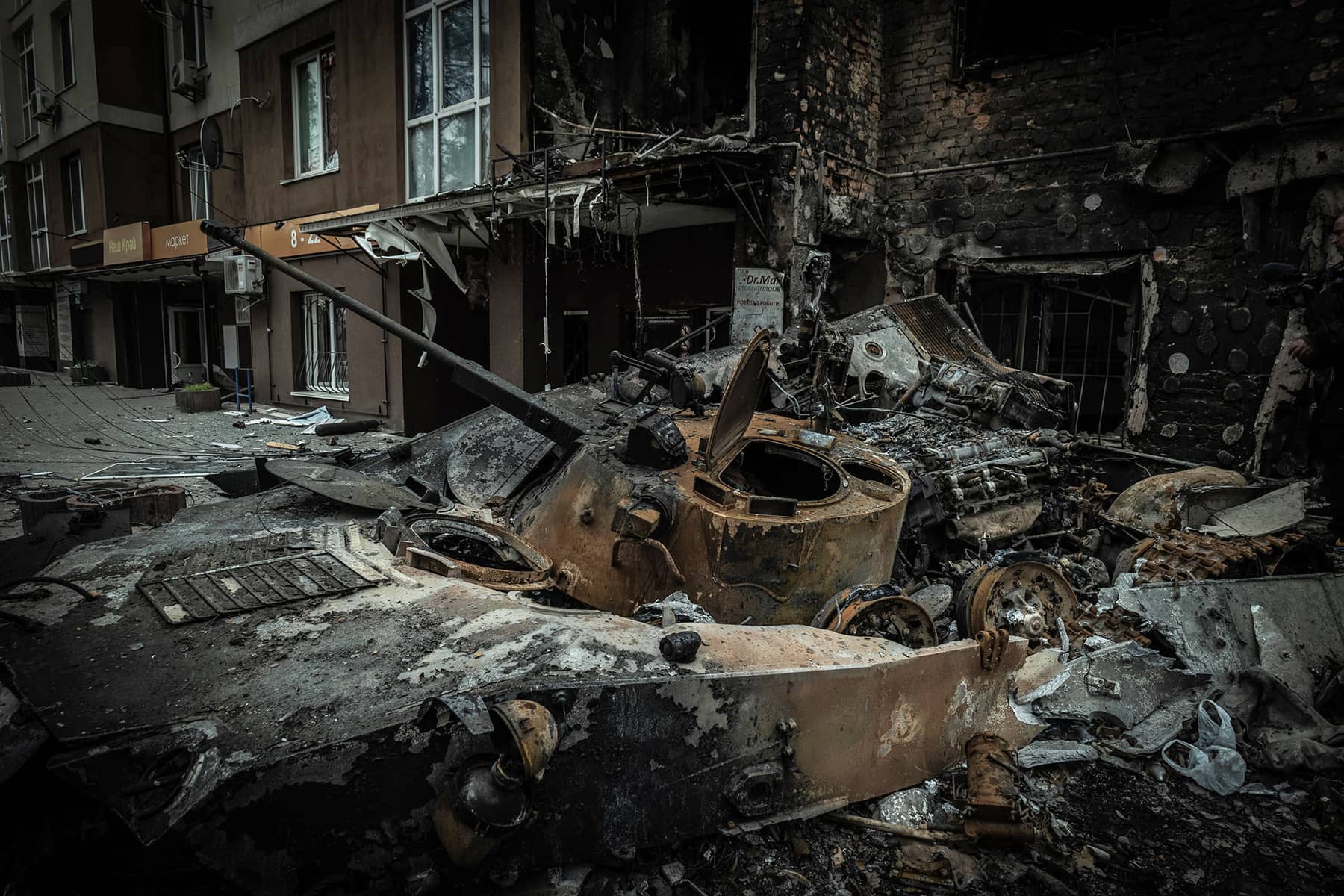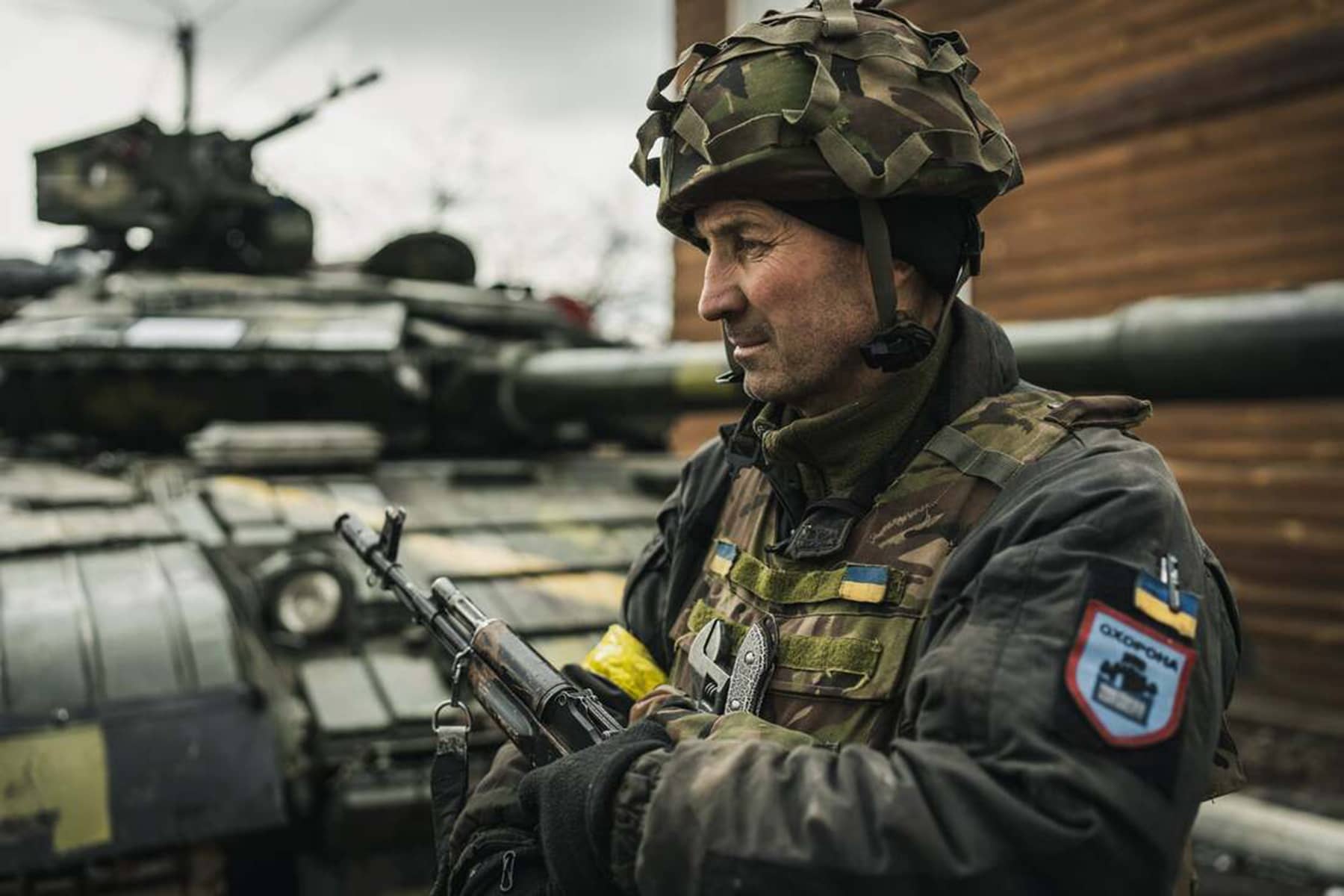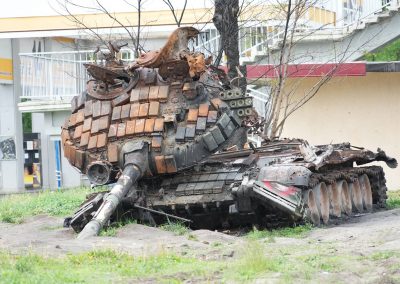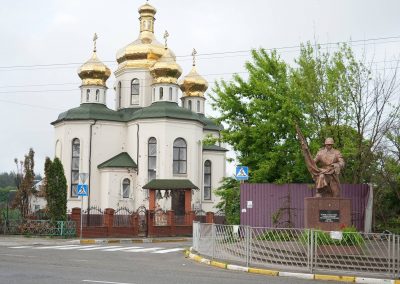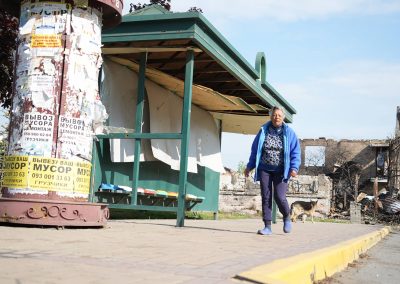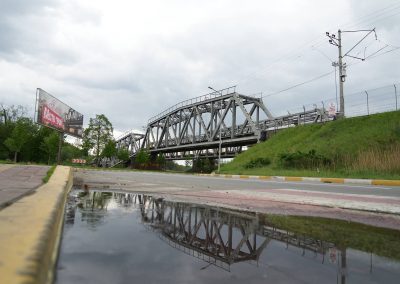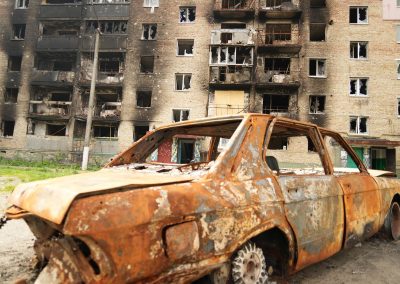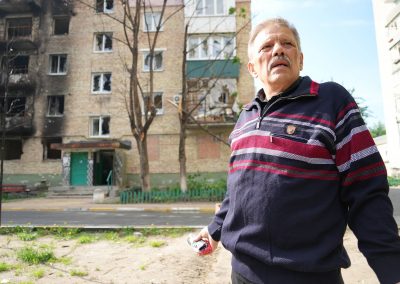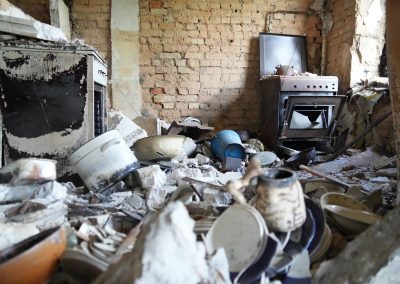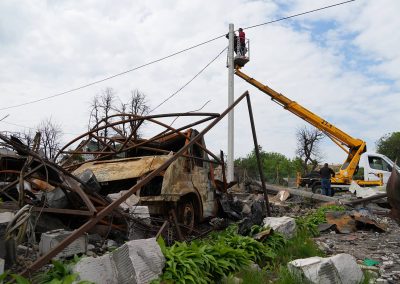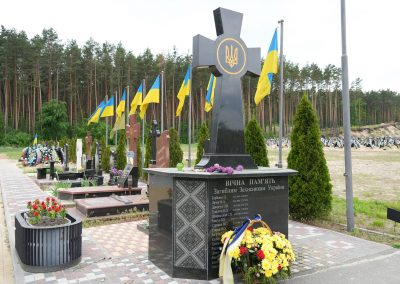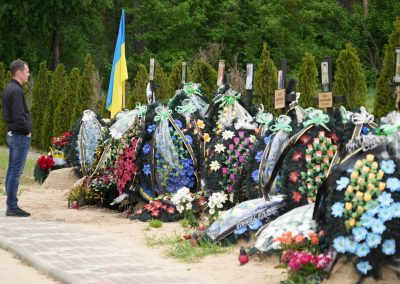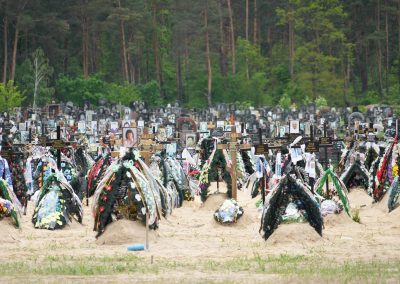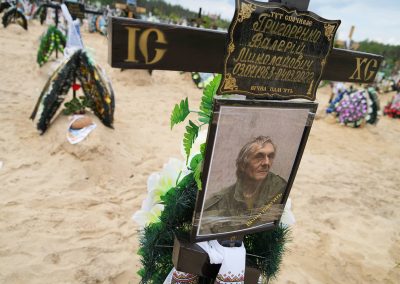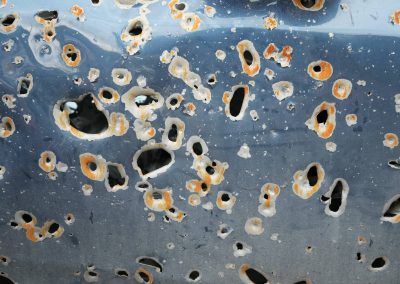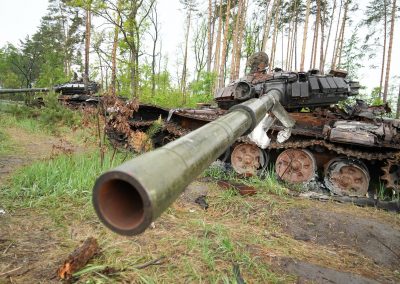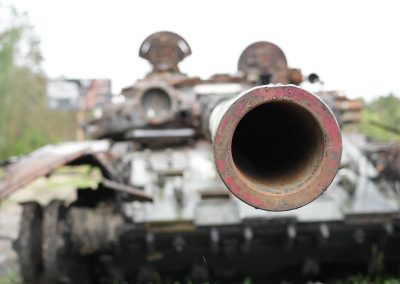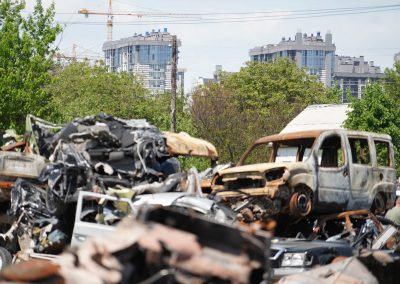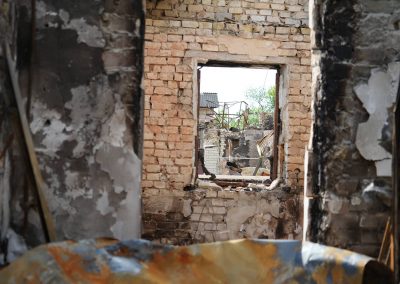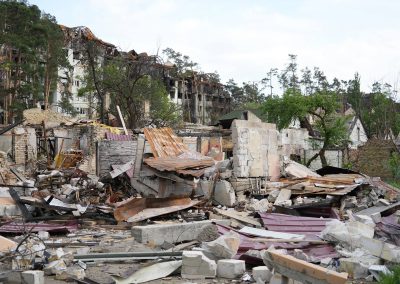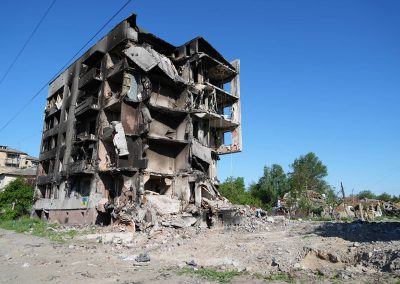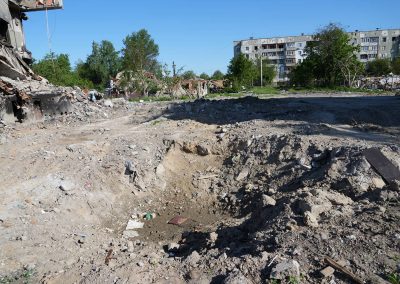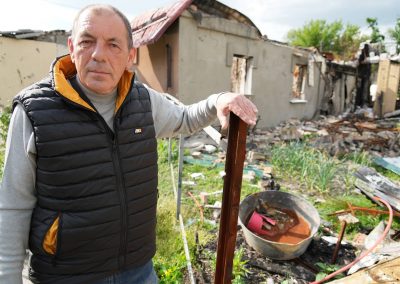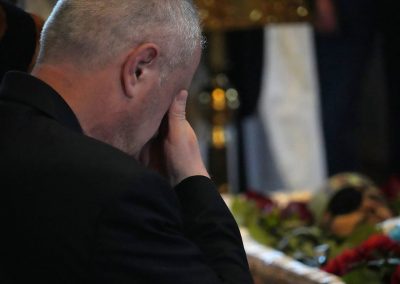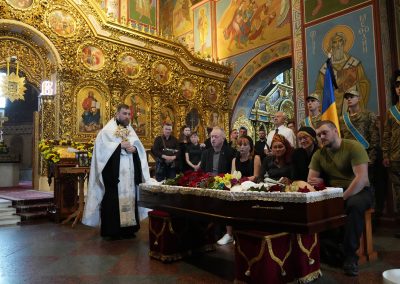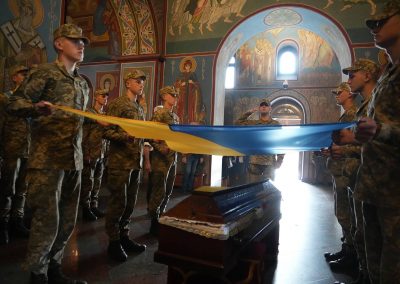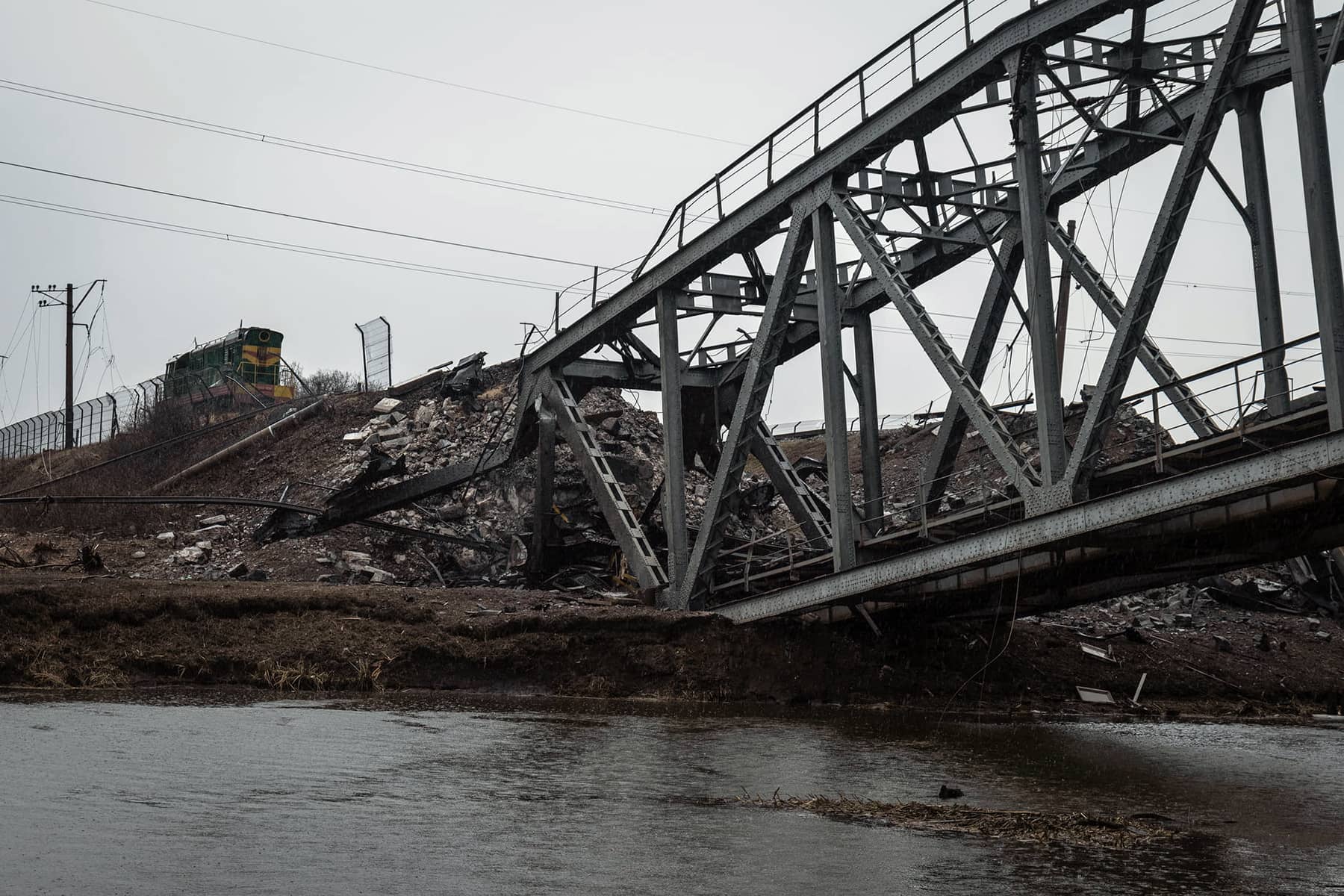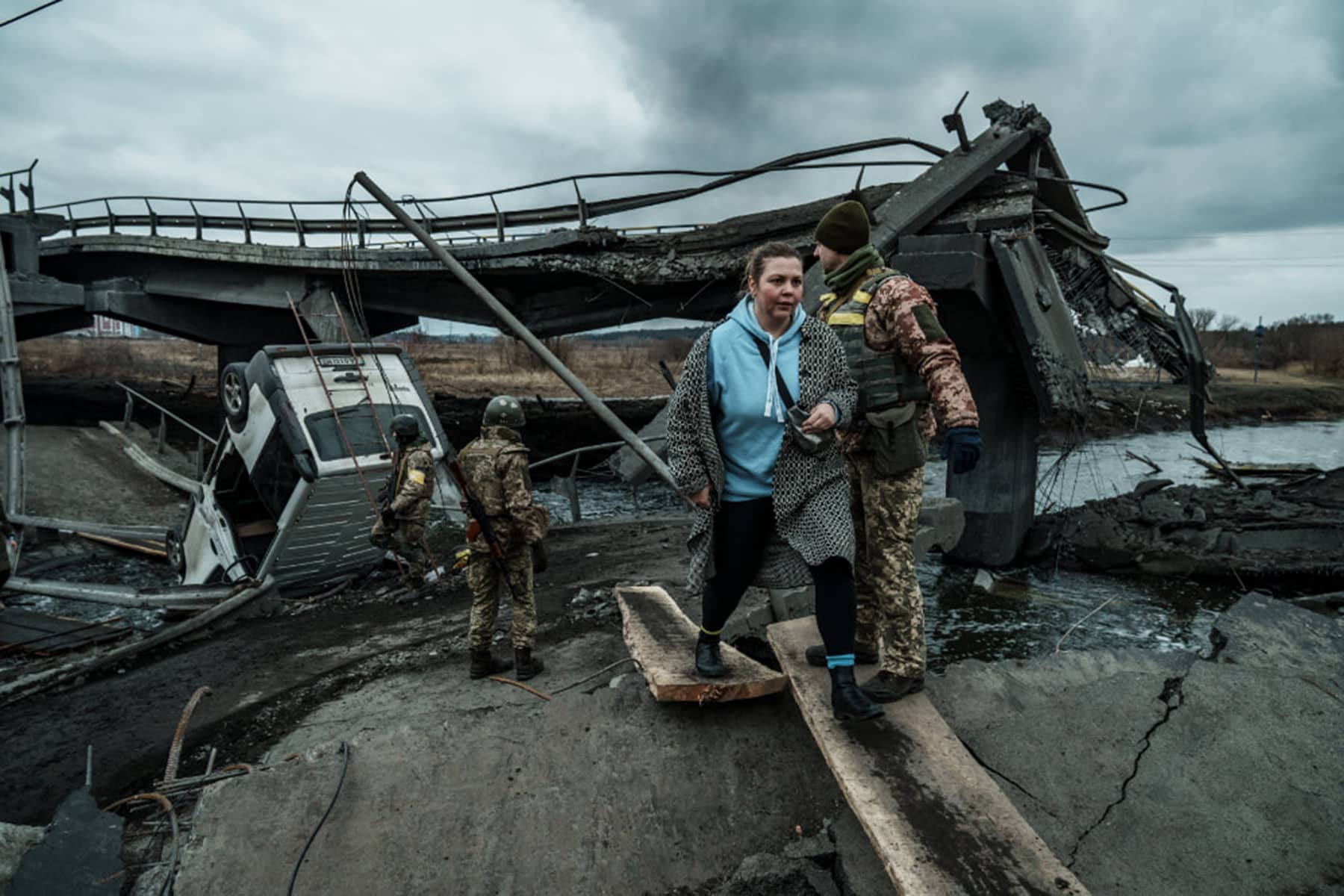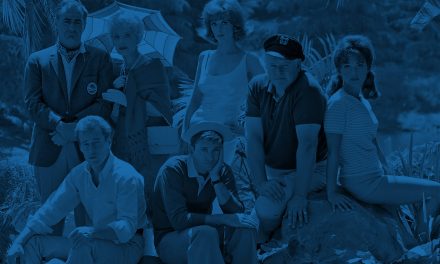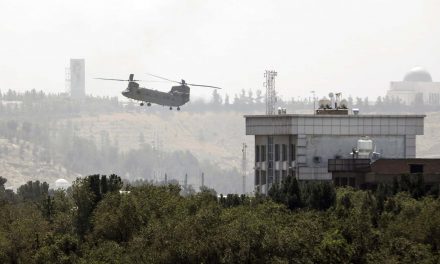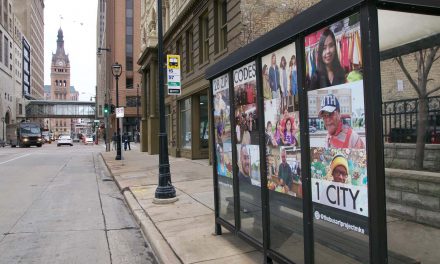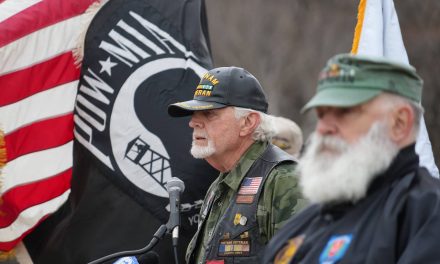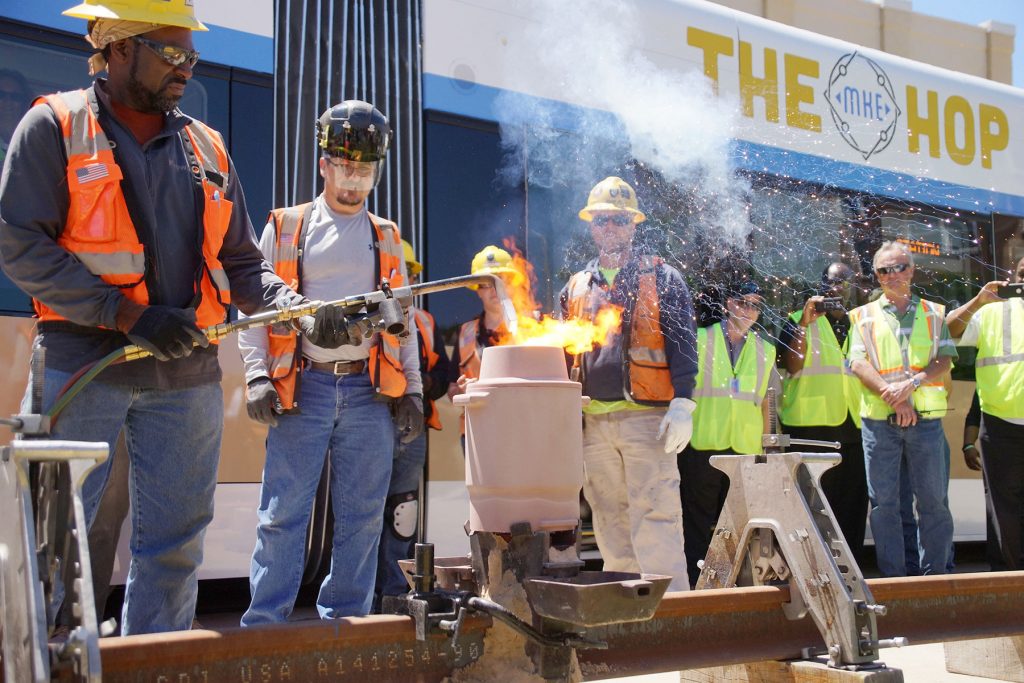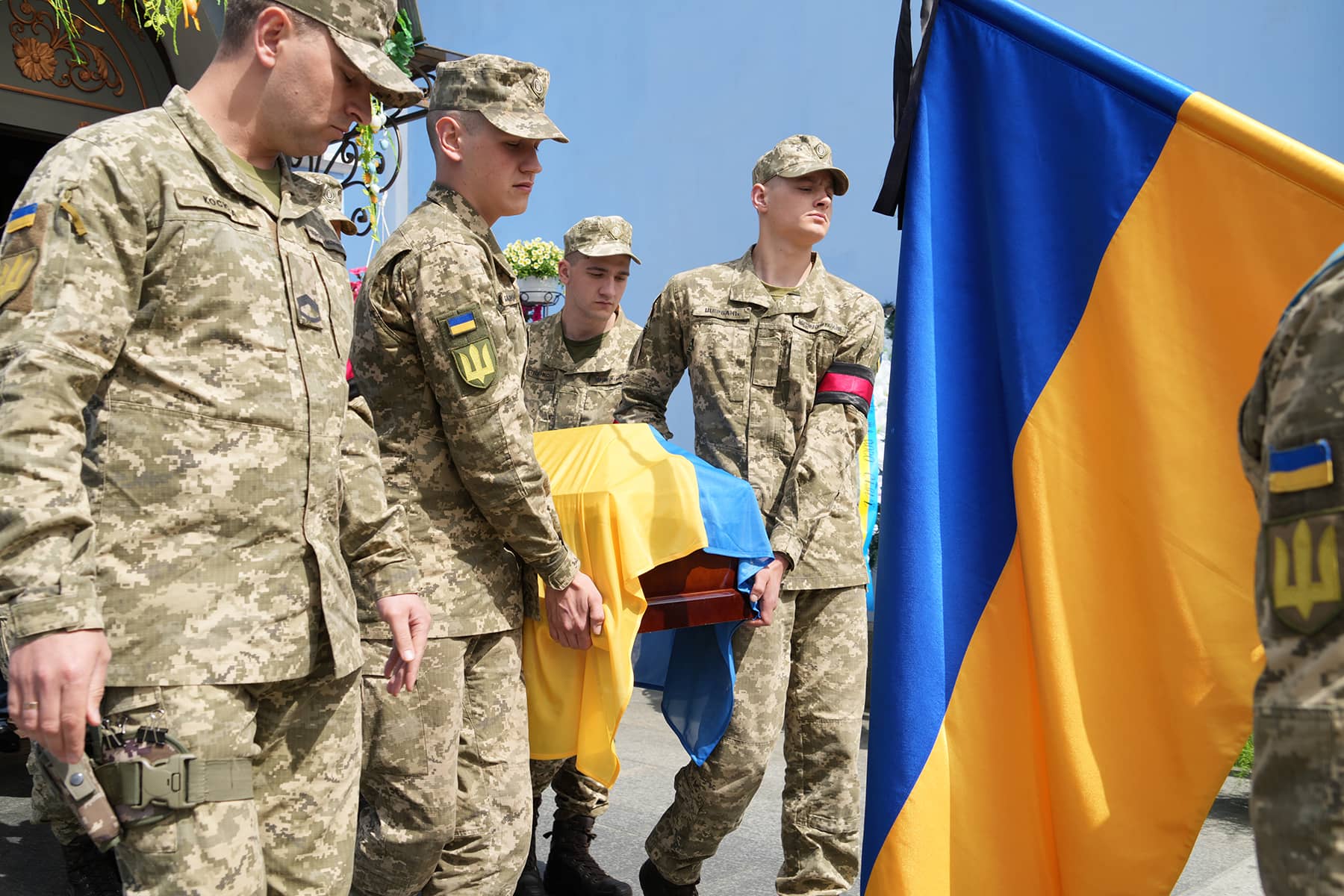
As recent as August 17, just seven days short of six months after Putin’s unprovoked full-scale invasion to seize Ukraine began, two dozen bodies of unknown residents were discovered in the city of Bucha. Placed in freshly dug graves, their headstones were marked with only numbers for identification, no names. They were among the hundreds of civilians in the area who were brutally massacred in the early days of the war by the occupying Russian forces.
August 24 is a bittersweet day, because it marks the six month anniversary of when the Russians launched their latest in a series of attempts to eradicate the independent nation of Ukraine. Like many others, I remember thinking on February 24 that Ukraine would most likely not survive six days before being overrun. Something like a half year seemed unthinkable in those early days of panic.
In those early hours of war, there seemed to be a great deal of shock as the unthinkable became a reality. Time seemed to move in both slow motion and at an accelerated speed, depending on what wave of chaotic news arrived via social media or TV.
The invasion was an indescribable injustice of historic proportions, and local connections with Ukraine brought that despair and danger to Milwaukee’s front doorstep. The Ukrainian American community in Milwaukee began protesting immediately on February 25, with a sense of extreme urgency about what they could do in that moment.
People like Halyna Salapata, who had previously attended political rallies, never expected to be organizing them – especially in support of their homeland. Along with being thrust into the limelight as media representatives, Salapata and others also took on the duty of gathering donated materials to help Ukrainian families fleeing the war, and collecting funds to send support to soldiers fighting on the frontlines.
These were all tasks that Salapata and others took on as volunteers, doing whatever had to be done – whatever they could do so far from loved ones – to protect the land of their birth. I know, from watching and listening, that many in Milwaukee’s Ukrainian community struggled with survivor’s guilt, from being here safe, helpless to assist their distant neighbors. They earned no compensation for their efforts, and routinely contributed their own money from feeling the urgency to do more.
To them, no amount of effort was ever enough. Whatever their sacrifice, it was nothing compared to the millions of families in Ukraine that were fleeing, or the tens of thousands of individuals fighting. Watching the commitment of someone like Salapata and other organizers was inspiring, and stood as an example for what many in Milwaukee should have been doing.
Just days earlier, a country that had already experienced years of localized conflict found itself with no safe quarter as troop attacked from every direction. Families fled, office workers picked up weapons to guard checkpoints, Russian missiles rained down on neighborhoods and shopping districts.
War, like any kind of disaster, puts people to the test. As days stretched into weeks, and then months, the race that started as a sprint became a marathon. Stories began to circulate of maternity hospitals being destroyed and shallow graves scattered across public parks were reminiscent of the gruesome history from World War II.
By the end of March, Russia had been held back from capturing the capital of Kyiv by heroes in Irpin, Milwaukee’s sister city. That victory was thanks in large part to Irpin’s Mayor Oleksandr Markushin. He had remained to organize and command the Territorial Defense Forces, when the Mayor of Bucha had fled.
By early April, cities from Bucha to the Belarus border were liberated from Russian occupation as the invaders were driven out of the country. Only then did the full scope of Putin’s monstrous and inhuman war crimes see the full light of day.
Satellite images confirmed the destruction that photojournalists documented on the ground, from systematic torture, methodical executions, and all forms of violent depravity inflicted by the retreating Russians on once quiet neighborhoods, left smoldering in ruin.
Instead of accepting defeat, the Russian dictator refocused his failed invasion on the Southern and Eastern regions of Ukraine. Even now, the war continues in Crimea, Donetsk, and Luhansk, where it has been going on since 2014.
I traveled to report from Ukraine as the first photojournalist from Wisconsin during the third month of the war, after Irpin had been liberated and the horrors across Kyiv Oblast were revealed to the world. Another three months later, I look back at that time, and before it, against the situation now.
In Milwaukee, even the Ukrainian American community is tired and fatigued from the long struggle. With the immediate threat of Russia’s ability to annex the entire country now diminished, mundane problems here at home have slowly taken priority. Big summer festivals have drawn to a close, vacations have ended, and children are getting ready for a new school year.
All the while residential buildings are hit by missiles, and innocent families are killed by the hour. Or while mothers are executed on the street while trying to get groceries for their children. Or while Donetsk and Luhansk face annexation by Putin’s puppet government, in the same way as Crimea in 2014.
Even families far from the hot war zones have left Ukraine, so their children could sleep a night without fear, and be able to attend school.
As Americans, we have the privilege of not experiencing a war raging in our nation, at least for now. It is easy to say that Irpin’s problems are not Milwaukee’s problems. We have that privilege of safety, but we are not untouched by the war. Rising food costs, gasoline price hikes, so many elements of our current inflationary situation are a direct result of Putin’s invasion of a major industrial and agricultural producer. There is always a cause and effect, whether our eyes are open to it or not.
There is also no gentle way to say that each day Ukrainian civilians are being slaughtered by Russian troops. Just because it has been six months and people in America may be tired of reading horrific headlines about war crimes does not mean that dead people in Ukraine are any less dead.
Putin invaded Ukraine on February 24 with the expectation that the government in Kyiv would fall quickly. Since then, at least 16 million Ukrainians have been displace from their homes, with estimates of up to 50,000 killed. This phase of the war has lasted longer than 6 days, and each day of freedom over the past 182 days has exacted a terrible price on the people of Ukraine.
In Irpin, basic infrastructure has been restored but vital repairs continue. Much of the city’s residential area was purposefully devastated by Russian artillery. Numerous city blocks of homes, apartments, shopping centers, and schools were left scorched from incendiary ordnance.
The most dramatic images from the start of the invasion were taken in Irpin. A destroyed bridge became the iconic setting for refugees, as thousands of residents waited to evacuate across the river. Families fled the relentless attacks with only the clothes on their backs, clutching each other and even beloved pets.
When I walked the streets with my team in May, everywhere we looked was proof of Russian war crimes. The sidewalks, school yards, shopping centers, were all littered with scars of war. They were the signature fingerprints of explosions from illegal munitions – like cluster bombs and flechettes. Using either against a combatant is classified as a war crime, and these weapons targeted civilians.
Some aspects of life in Irpin had slowly returned to normal back then, and have continued over the past three months. But there remains years of work ahead to restore what was lost. Perhaps nothing can bring back the calm tranquility and peace of mind, especially as the war continues elsewhere in the country. For the innocent residents of Irpin and nearby cities who were killed, their loss is beyond measure.
Wars end when they end, they are not a gallon of milk on a shelf with an expiration date. Technically, the Korean War is not over after seven decades. To many people, where ever they are, when problems are out of sight they are out of mind. Yet as Tom Hanks famously said in the closing of Charlie Wilson’s War from 2007 … “that ball, it keeps bouncing.”
Despite governments worldwide advising tourists not to visit Ukraine, there is at least one travel company offering unofficial tours of “Brave cities.” These kind of “conflict tours” give visitors the opportunity to walk through parts of Irpin, Bucha, and other areas left devastated by the invasion.
I discovered this sightseeing story on August 19, the same day that I received a confirmed casualty report. Another 30 Ukrainian POWs were returned from captivity, but not before the Russians had castrated them.
I look back at the war images that Milwaukee Independent was privileged to published by Sergi Mykhalchuk, who was in Irpin during the city’s evacuation in early March and then for its liberation a few weeks later. I compare those harsh images with my own, taken a couple months later, and what I see today published by Irpin’s local news service, ITV. It is hard to believe all these events happened at the same place, let alone within the same year.
>>> READ: Photos from the frontlines: Sergi Mykhalchuk documents images of war as civilians evacuate Irpin
Irpin will celebrate its City Day in late September, similar to Milwaukee’s 414 Day. It will be the first time to hold the event since the invasion began. It is sure to be a solemn day, as residents look back on 2021 and count the missing friends and family lost in Putin’s insanity of conquest.
I would like to be able to write about the war being over when February 24, 2023 arrives. I would like to write about how Ukrainians were finally able to liberate every last inch of their sovereign nation, and they could finally live in peace without making further sacrifices. Selfishly, I would like to fly into Kyiv for my next visit simply as a tourist – and save 20 hours of travel time.
I have many hopes for the people of Ukraine, and their relations living here in Milwaukee. It is my hope that Salapata and others can slip away from the media spotlight and back into anonymity, raise their children or spend time with friends, and continue to promote Ukrainian culture with pride.
It is also my hope that others in Milwaukee, regardless of the issue, will step up and make more efforts to improve our shared community. I have seen so many people come forward to make a difference and help as best they could, only to be greeted with criticism from the sidelines by people who refused to lift a finger but believed their opinion entitles them to special recognition.
The war in Ukraine maybe have been fought to a stalemate of sorts for now, but the war itself remains ongoing. The people of Ukraine remain defiant. That ball keeps bouncing.
After experiencing COVID for two years, Americans just wanted life to return to normal. It has been anything but normal, as our collective amnesia has proven. That should be a lesson for us. Putting the war out of sight and out of mind is a betrayal, and distortion of reality.
I do not expect most people to keep up with the daily situation in Ukraine. There is a lot going on in the world and we have to prioritize our attention. But not to the point of willful ignorance on matters that are important even if existential.
August 24 also marks 31 years of Ukraine’s independence from Soviet rule. A fact that gnaws at Putin, as he remains fixated on erasing Ukraine. He will never settle for anything less, regardless how long it takes to achieve. Ukrainian fighters have shown that peace in our time can only come from driving Russian forces out of their country.
For a patient to survive, a cancer cannot be partially cured. For Ukraine to heal, the cancer of Putin’s madness must be removed completely. Closing our eyes to a cancer and ignoring its manifestation has never cured a patient. It has only ensured a steady supply of caskets.
Sergi Mykhalchuk and Lee Matz
- Reports from Ukraine: Traveling from Milwaukee to a country at war just to take a vacation from America
- Images from Ukraine: Latino artist travels to Irpin to paint mural inspired by “Echoes of Guernica”
- Images from Ukraine: Irpin residents welcome reissue of Russian Warship Stamp as latest sign of victory
- Stories from Ukraine: Wandering in the ruins of a shattered life after surviving Russia’s invasion
- Images from Ukraine: Similar to the Alamo, martyred cities bought precious time to save a nation
- Stories from Ukraine: Tent camp offers shelter for displaced residents until Irpin can rebuild lost homes
- Images from Ukraine: Graveyards of Russian war machines show the scale of Putin’s failure to seize Kyiv
- Images from Ukraine: Following the invasion convoy’s 40-mile route and exploring an abandoned base
- Stories from Ukraine: Illegal weapons and proof of Russian War Crimes easily seen along streets of Irpin
- Images from Ukraine: How Irpin’s cemetery processed the staggering massacre of its local citizens
- Stories from Ukraine: Healing remains slow as Borodyanka residents recover from occupation
- Images from Ukraine: The deep scars of war remain visibly etched across the landscape of Borodyanka
- Interview with Oleksandr Markushin: Mayor of Irpin and the hero of a Hero City
- A Meeting of Sister Cities: Former and current Mayors of Irpin ask Milwauke’s business community for help
- Stories from Ukraine: Having a shared purpose helped Irpin’s leaders protect the city and stop the invaders
- Stories from Ukraine: How Milwaukee helped a bakery feed hungry survivors in Bucha with fresh bread
- Stories from Ukraine: Bucha resident recalls how Russians turned neighborhood into a street of death
- Stories from Ukraine: How a mass grave of executions overshadowed accountability from Bucha’s leadership
- Images from Ukraine: Putin’s attack on Babyn Yar is a painful reminder of the broken vow of “Never Again”
- Images from Ukraine: An unexpected encounter with Jewish history and the bloody legacy of persecution
- Images from Ukraine: Listening to timeless voices of ethnic heritage etched in stone at Lychakiv Cemetery
- Images from Ukraine: The experience of attending a military funeral in Kyiv while children died in Uvalde
- Images from Ukraine: Stepping out of the fog of war to see the beauty of faith in ancient places of worship
- Images from Ukraine: The cities of Kyiv and Lviv were divided by history but remain united in identity
- Stories from Ukraine: Anya Nakonechna shares why the Lviv Opera is a symbol of her nation’s culture
- Images from Ukraine: A folk village where visitors can experience the life of past generations
- Images from Ukraine: Signs of renewal sprout from under Irpin’s rubble as city looks to the future

